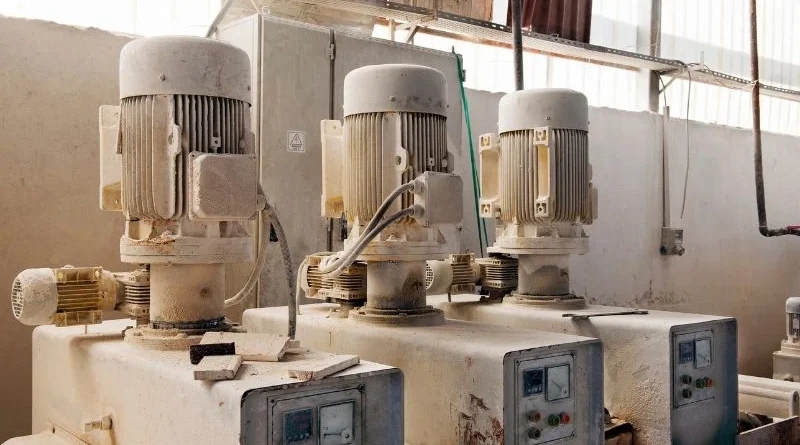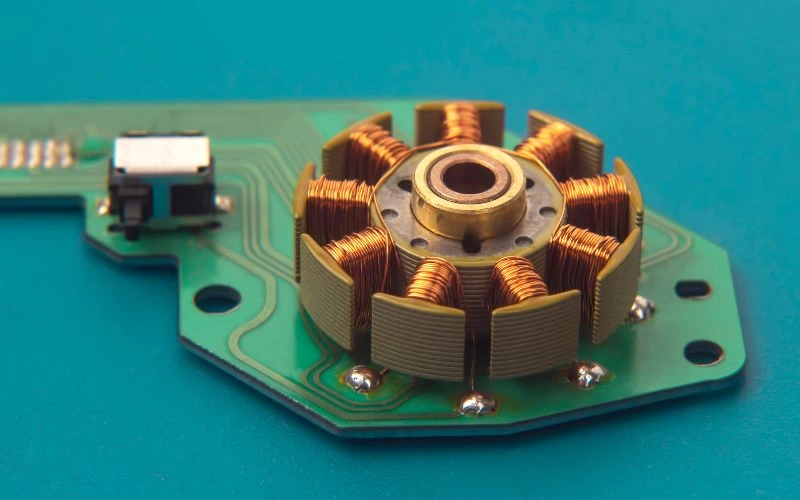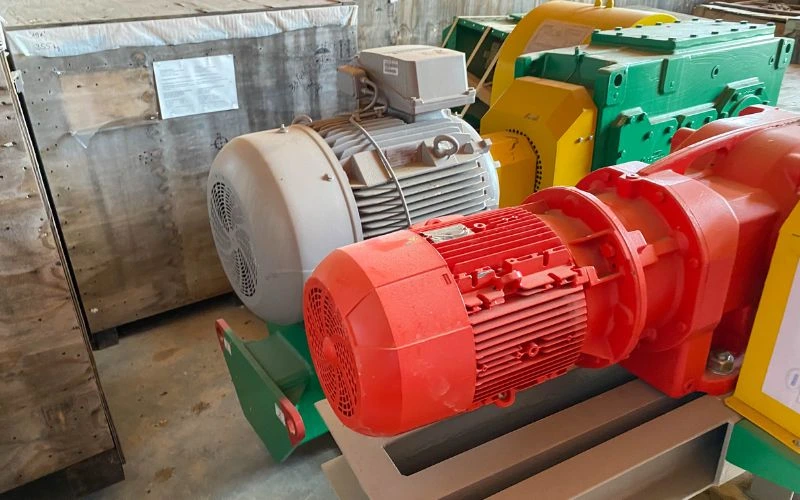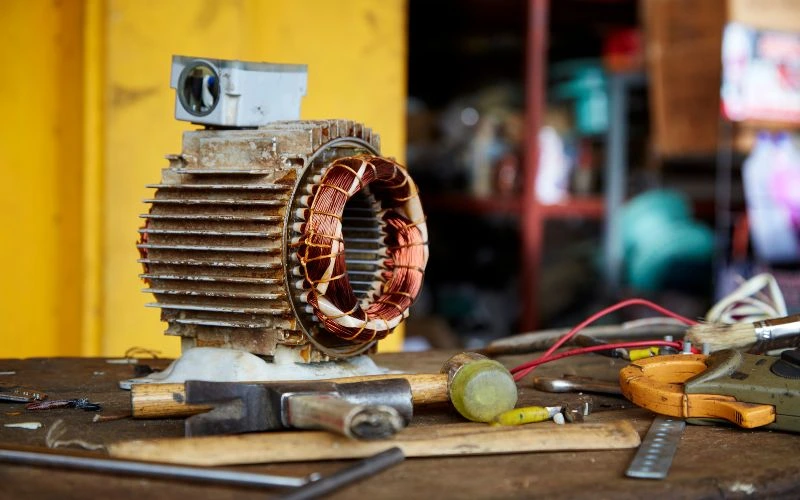
Induction motors are ubiquitous in our modern world. They power everything from household appliances to industrial machines. But have you ever wondered how these powerful engines work? In this comprehensive guide, you will learn more about how induction motors work. By the end of this article, you will fully understand how these important devices work.
What is an induction motor?
Before we delve into the intricacies of induction motor operation, it is important to understand what an induction motor is and its importance. Thanks to their reliability and simplicity, induction motors are the most widely used type of electric motor around the world. They were first developed by Nikola Tesla in the late 19th century and have since become the workhorse of the industrial and residential world.
These motors work on the principle of electromagnetic induction, in which electrical energy is converted into mechanical energy. They are often used in applications where durability, efficiency and low maintenance are critical. The next sections explain how the induction motor works.
The basic components of an induction motor

Induction motors are made up of several main components, each of which plays a critical role in their operation:
stator
The stator is the stationary part of the engine. It consists of a laminated iron core with evenly spaced grooves for winding coils. When activated, these coils are connected to power and create a rotating magnetic field. This magnetic field is crucial for inducing a current in the rotor.
rotor
The rotor is the rotating part of the engine and is usually located in the stator. It can be built in different ways, e.g. B. as a squirrel cage rotor or as a wound rotor. The main function of the rotor is to interact with the rotating magnetic field generated by the stator. This interaction causes the rotor to rotate and creates mechanical movement.
air gap
The air gap is the small space between the stator and rotor. It is crucial for the operation of the engine, as it allows the transfer of electromagnetic energy from the stator to the rotor. The air gap size is carefully controlled to optimize engine performance.
camping
Bearings support the rotor and allow it to rotate with minimal friction. Proper bearing lubrication is critical to long-term engine operation.
Final bells
The end bells surround the stator and rotor, protecting them from environmental influences and providing mechanical stability to the engine.
The working principle of induction motors

Induction motors work on the principle of electromagnetic induction, which Michael Faraday discovered in the early 19th century. This principle states that a changing magnetic field induces an electromotive force (EMF) in a nearby conductor. In an induction motor, this conductor is the rotor.
The working principle of an induction motor can be divided into the following steps:
Power supply
When the motor is connected to a power source, current flows through the stator windings. This current creates a rotating magnetic field with alternating polarity. The speed of the rotating magnetic field is determined by the frequency of the power supply, which is usually 50 or 60 Hz.
Interaction of magnetic fields
The rotating magnetic field of the stator induces a current in the rotor windings or bars. This induced current creates its magnetic field in the rotor. The rotor's magnetic field interacts with the stator's magnetic field, creating a torque that causes the rotor to move.
Rotor rotation
When the rotor starts to rotate, it tries to keep up with the rotating magnetic field of the stator. However, due to the slipping phenomenon, it never manages to reach the same speed. This difference in speed between the rotor and stator magnetic field allows the motor to continuously generate torque and mechanical movement.
Stationary operation
After the motor reaches its operating speed, it runs at a nearly constant speed, which is slightly slower than the synchronous speed (the speed of the rotating magnetic field). This steady-state operation is the normal mode of an induction motor and allows it to perform its intended work.
The importance of induction motors

Induction motors play an important role in various industries and applications. Here are some of the main reasons behind its importance:
versatility
Induction motors are incredibly versatile. They are used in a variety of applications, from small household appliances to large industrial machines. Whether it's your home refrigerator or a factory's massive conveyor system, induction motors provide the power you need.
durability
One of the biggest advantages of induction motors is their longevity. They have a simple design, no brushes or commutators, and no common wear parts like other motors. This means that induction motors can operate for many years with minimal maintenance.
Energy efficiency
Energy efficiency is a top priority today and induction motors fulfill this task. They are highly efficient when operating at or near rated load. This efficiency reduces energy consumption and reduces operating costs for companies.
Low maintenance effort
Due to their robust construction and lack of friction components such as brushes, induction motors require minimal maintenance. This low maintenance requirement reduces downtime and operating costs for the industry, making them an attractive choice for continued use.
Cost effectiveness
Induction motors are cheap in terms of purchase price and operating costs. Their durability, energy efficiency and low maintenance make them an economical choice for businesses and homeowners alike.
Conclusion
In short, induction motors are basic devices with a simple yet ingenious working principle. These motors have become essential in our modern world because they harness the power of electromagnetic induction. Understanding their components and how they work is essential for anyone who works with or relies on these workhorses in industry and everyday life.
Common questions
1. What is slip in an induction motor and why is it important?
Slip is the difference between the synchronous speed (the speed of the rotating magnetic field) and the actual speed of the rotor. It is crucial in induction motors as it allows them to continuously develop torque. Without slip, the rotor would rotate at the same speed as the magnetic field and therefore would not produce relative motion or torque.
2. Are there different types of induction motors?
Yes, there are different induction motors, each designed for specific applications. The two main categories are squirrel cage induction motors and wound rotor induction motors. Squirrel cage motors are often used in applications where simplicity and reliability are critical, while wound rotor motors offer more control and are often found in industrial settings.
3. How efficient are induction motors?
Induction motors are known for their high efficiency, especially when operated close to their rated load. Their efficiency can reach 85% or more, making them an environmentally friendly and economical choice for a variety of applications.

